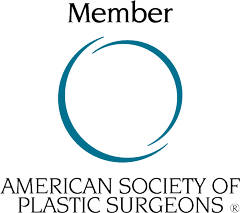I often hear from patients who want to have a Breast augmentation, but are afraid of anesthesia, or “going under.” They are concerned about the postoperative nausea, and feeling rotten for a couple of days after anesthesia. It doesn’t have to be so.
The choice of anesthesia for Breast Augmentation are either General Anesthesia or IV anesthesia. With IV anesthesia the recovery is very quick, less nausea, and no lousy feeling the days after surgery. In addition, the risk of getting a blood clot or pulmonary embolism is almost eliminated.
IV anesthesia as an alternative to General Anesthesia
There are two keys to successful breast augmentation with IV anesthesia. The first is using the newer combinations of intravenous anesthetics. A short acting barbiturate, such as propofol, is used with a dissociative anesthetic. The patient is then not as heavily sedated and can breathe on her own.
Another drug used is an amnesic, which prevents formation of memory of the event. More importantly, using this combination, there is very little need, if any, for narcotics. Narcotics are a major source of post-operative nausea and vomiting.
The recovery room experience is much improved with IV anesthesia. First of all, the patient wakes up much quicker. Secondly, there is hardly any nauses. When I used General Anesthesia in the past, I used to prescribe Zofran (anti-nausea drug).
Since I have been using monitored IV anesthesia I rarely need to prescribe nausea medications. The recovery room stays are now so short, that the patient is fully awake, walking and ready to go home within an hours time.
IV anesthesia eliminates DVT and pulmonary risks
With IV anesthesia there is no risk of malignant hyperthermia or blot clot to the legs or lungs, as those risks are only associated with general anesthesia. Thus, properly monitored IV anesthesia is a safer choice than general anesthesia for Breast augmentation.
Post op recovery with IV anesthesia is quicker
Two days after Breast augmentation surgery, I usually see patients to remove the drains. At this appointment, I see a remarkable improvement in their recovery compared to patients that I formally used General Anesthesia with.
When I previously usee General Anesthesia for Breast Augmentation, the patients used to show up in pajamas, hair undone, and a bit wobbly. The most often asked questions are how long the pain is going to last, and can I refill the pain medication prescription.
Undoubtedly, Breast augmentation with IV anesthesia has been a great advance in patient care for my patients and I highly recommend it to anyone contemplating Breast augmentation.
(originally posed on March 14, 2009)




Borsje says:
Dr. Ricardo L Rodriguez says:
Dr York Yates says:
Dr. Ricardo L Rodriguez says:
melanie g says:
admin says: